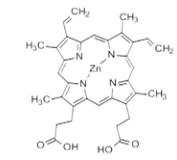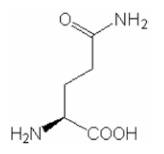康宁corning 4123 TIPS,300UL,NAT GRADUATED IN HINGED RACKS,S,BK,960/3840 96个/盒,10盒/包 4包/箱 2318.43
日度归档:2024年10月2日
康宁corning 11706 50mL PP Preassembled Closed Systems Solution Centrifuge Tubes, Self-Standing, with Accessory, Sterile 1/包
康宁corning 11706 50mL PP Preassembled Closed Systems Solution Centrifuge Tubes, Self-Standing, with Accessory, Sterile 1/包 2包/箱 3385.55
Amresco 0155-100G 8-HYDROXYQUINOLINE 8-羟基喹啉
Amresco 0155-100G 8-HYDROXYQUINOLINE 8-羟基喹啉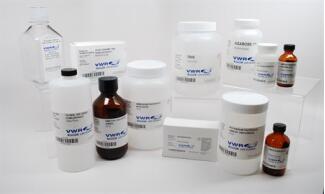
Pall颇尔滤膜 4214 SYRINGE FILTER HT 0.2UM PK1000
Pall颇尔滤膜 4214 SYRINGE FILTER HT 0.2UM PK1000 1069 8553
Amresco 0417-25,000U PEROXIDASE, HORSERADISH, RZ 1.0 辣根过氧化物酶, RZ 1.0
Amresco 0417-25,000U PEROXIDASE, HORSERADISH, RZ 1.0 辣根过氧化物酶, RZ 1.0
抗肝病药成分
| 产品编号 | 产品名称 | 产品规格 | 产品等级 | 产品价格 |
| 167-13651 | Protoporphyrinato Zinc 锌原卟啉 | 10mg | - | - |
| 076-00521 | L(+)-Glutamine L(+)-谷氨酰胺 | 5g | - | - |
| 074-00522 | L(+)-Glutamine L(+)-谷氨酰胺 | 25g | - | - |
| 072-00523 | L(+)-Glutamine L(+)-谷氨酰胺 | 100g | - | - |
| 078-00525 | L(+)-Glutamine L(+)-谷氨酰胺 | 500g | - | - |
抗肝病药成分
◆锌原卟啉(Protoporphyrinato Zinc)
|
CAS No. 15442-64-5 C34H32N4O4Zn=626.05 可溶性溶媒:N,N- 二甲基甲酰胺、吡啶 用途(作用):能促进肝蛋白合成,抑制肝过氧化氢酶活性降低。 |
|
◆L(+)-谷氨酰胺(L(+)-Glutamine)
|
CAS No. 56-85-9 C5H10N2O3=146.15 纯度:99.0+%(Titration) 可溶性溶剂:水 用途(作用):和氨结合,降低氨的作用。 |
|
相关资料详情请查看:http:///pdf/show/80.html
荧光染料C24B0 BDP TMR alkyne 10 mg
lumiprobe荧光染料C24B0 BDP TMR alkyne 10 mg lumiprobe荧光染料BDP TMR 炔基 10 mg 310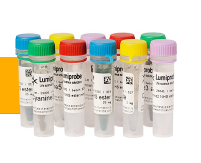
聚合物标准品—APSC
上海金畔生物提供聚合物标准品—APSC
|
品名
|
分子量
|
规格
|
市场价
|
|
|
聚苯乙烯标准品162-2000万
|
低分子量
|
162-5400
|
250mg
|
询价
|
|
中分子量
|
6000-100k
|
250mg
|
询价
|
|
|
高分子量
|
110k-1390k
|
250mg
|
询价
|
|
|
超高分子量
|
2000k-20000k
|
250mg
|
询价
|
|
|
聚乙烯标准品
|
低分子量
|
800-34K
|
250mg
|
询价
|
|
低分子量
|
86-64K
|
1g
|
询价
|
|
|
超高分子量
|
800K-115K
|
1g
|
询价
|
|
|
窄分子量分布
|
6K-115K
|
200mg
|
询价
|
|
|
宽分子量分布 低密度
|
52K-150K
|
1g
|
询价
|
|
|
宽分子量分布 高密度
|
102K
|
1g
|
询价
|
|
|
聚丙烯酸钠标准品 1300-170万
|
低分子量
|
1K-245K
|
250mg
|
询价
|
|
高分子量
|
300K-1700K
|
250mg
|
询价
|
|
|
宽分子量分布
|
1K-1200K
|
1g
|
询价
|
|
|
聚乙二醇标准品 62-29450
|
低分子量
|
62-1000
|
1g
|
询价
|
|
高分子量
|
1K-30K
|
1g
|
询价
|
|
|
聚氧乙烯标准品 24000-175万
|
窄分子量分布
|
25K-1000K
|
200mg
|
询价
|
|
宽分子量分布
|
120K-2000K
|
1g
|
询价
|
|
|
聚苯乙烯磺酸钠标准品
1430-285万
|
窄分子量分布
|
3K-5640K
|
250mg
|
询价
|
|
宽分子量分布
|
65K-700K
|
1g
|
询价
|
|
|
葡聚糖(右旋糖酐)标准品 180-740万
|
低分子量
|
180-36K
|
1g
|
询价
|
|
中分子量
|
41K-145K
|
1g
|
询价
|
|
|
高分子量
|
160K-440K
|
1g
|
询价
|
|
|
高分子量
|
515K-1300K
|
1g
|
询价
|
|
|
超高分子量
|
1900K-5900K
|
1g
|
询价
|
|
|
宽分子量分布
|
1K-6100K
|
1g
|
询价
|
|
|
套装,不拆分
|
1270-676K
|
800mg*10
|
询价
|
|
|
羟乙基淀粉标准品 6k-280万
|
低分子量
|
6K-200K
|
250mg
|
询价
|
|
高分子量
|
220K-2800K
|
250mg
|
询价
|
|
|
普鲁兰多糖(聚麦芽三糖)标准品(apsc)
|
分子量
|
5900-96万
|
200mg
|
询价
|
|
套装,不拆分
|
5900-788K
|
200mg*8
|
询价
|
|
|
套装,不拆分
|
70K-825K
|
200mg*20
|
询价
|
|
|
普鲁兰多糖标准品Pullulan,shodex
|
套装,不拆分
|
5.9K-708K
|
200mg*8
|
询价
|
|
羟丙基纤维素标准品
|
||||
|
10K-50K
|
250mg
|
询价
|
||
|
宽分子量分布
|
30K-865K
|
1g
|
询价
|
|
|
宽分子量分布
|
62700-94200
|
1g
|
询价
|
|
|
羧甲基纤维素钠标准品
|
109200-11600
|
1g
|
询价
|
|
|
聚2-乙烯吡啶标准品
|
3300-130万
|
250mg
|
询价
|
|
|
聚烯丙基胺盐酸盐标准品
|
1g
|
询价
|
||
|
壳聚糖/几丁聚糖标准品
|
326700-141400
|
1g
|
询价
|
|
|
黄原胶 标准品
|
250mg
|
询价
|
||
|
瓜尔胶 标准品
|
250mg
|
询价
|
||
|
羟乙基纤维素标准品
|
4万-6万
|
250mg
|
询价
|
|
|
聚甲基丙烯酸甲酯标准品820-610万
|
低分子量
|
700-85k
|
250mg
|
询价
|
|
中高分子量
|
110k-2100k
|
250mg
|
询价
|
|
|
聚丁二烯标准品
|
500-700k
|
250mg
|
询价
|
|
|
聚异丁烯标准品
|
低分子量
|
226-1400
|
250mg
|
询价
|
|
中分子量
|
3000-85k
|
250mg
|
询价
|
|
|
高分子量
|
90k-436k
|
250mg
|
询价
|
|
|
超高分子量
|
570k-2600k
|
250mg
|
询价
|
|
|
聚碳酸酯标准品
|
4200-46100
|
250mg
|
询价
|
|
|
聚丙二醇标准品
|
76-53000
|
1g
|
询价
|
|
|
聚醋酸乙烯标准品
|
17000-275000
|
1g
|
询价
|
|
|
聚氯乙烯标准品
|
21500-155000
|
200mg/1g
|
询价
|
|
|
聚乙烯醇缩丁醛标准品
|
66500-167000
|
1g
|
询价
|
|
|
聚二甲基硅氧烷标准品 162-100万
|
低分子量
|
162-35k
|
500mg
|
询价
|
|
中分子量
|
40k-150k
|
500mg
|
询价
|
|
|
聚乙烯对苯二甲酸酯标准品
|
27400-63500
|
1g
|
询价
|
|
|
聚对苯二甲酸丁二酯标准品
|
16150-54600
|
1g
|
询价
|
|
|
醋酸纤维素标准品
|
250mg
|
询价
|
||
|
三醋酸纤维素标准品
|
250mg
|
询价
|
||
|
聚己内酰胺(尼龙6)标准品
|
17200-41000
|
1g
|
询价
|
|
|
聚已二酰已二胺及纤维(尼龙66)标准品
|
32300-11万
|
250mg
|
询价
|
|
|
聚丙烯腈标准品
|
85250-193100
|
500mg
|
询价
|
|
|
偏氟乙烯-六氟丙烯标准品
|
20万-70万
|
1g
|
询价
|
|
|
聚砜标准品
|
1g
|
询价
|
||
|
聚乳酸标准品
|
3000-140万
|
250mg
|
询价
|
|
|
聚丙烯标准品
|
低分子量
|
800-34K
|
250mg
|
询价
|
|
聚丙烯标准品
|
宽分子量分布
|
800-800K
|
1g
|
询价
|
|
聚四氢呋喃标准品
|
1250-8950
|
1g
|
询价
|
|
|
聚甲基丙烯酸钠标准品
|
套装
|
1250-947K
|
250mg*10
|
询价
|
|
宽分子量分布
|
8K-690K
|
250mg
|
询价
|
|
|
聚丙烯酰胺标准品 3350-900万
|
非离子型
|
3350-1100K
|
250mg
|
询价
|
|
非离子型
|
3200-9000K
|
500mg
|
询价
|
|
|
聚乙烯醇标准品
|
5800-20万
|
1g
|
询价
|
|
Whatman 滤膜 8115-2250 CF5 22MMX50M
Whatman 滤膜 8115-2250 CF5 22MMX50M CF5 22MMX50M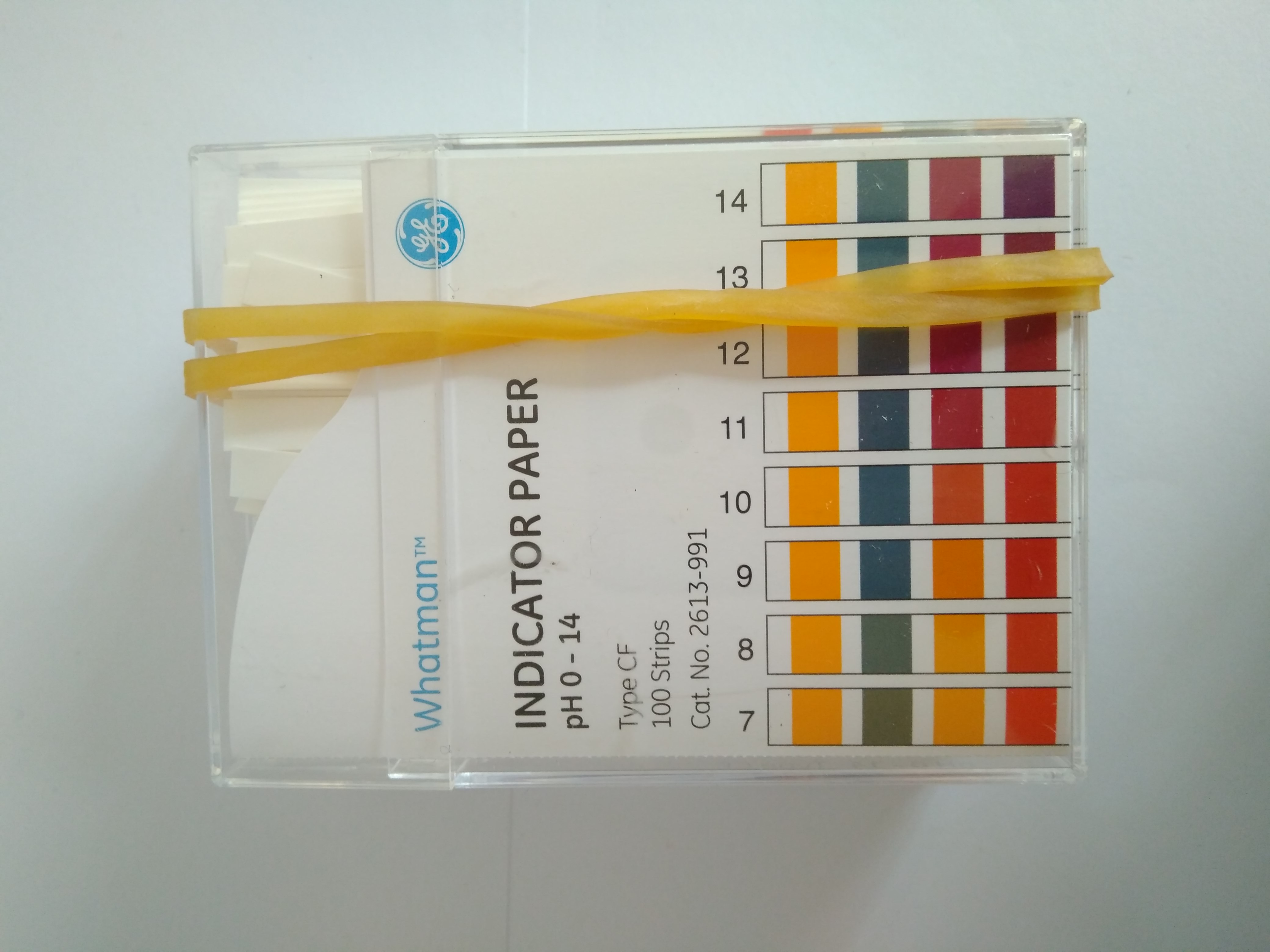
荧光染料41720 Alkyne NHS ester (hexynoic acid NHS ester) 25 mg
lumiprobe荧光染料41720 Alkyne NHS ester (hexynoic acid NHS ester) 25 mg lumiprobe荧光染料炔基 羧基活性酯 (hexynoic acid 羧基活性酯) 25 mg 95
内切-1,3 – β-D-葡聚糖酶(大麦)(重组) endo-1,3-β-D-Glucanase (barley) (Recombinant) 货号:E-LAMHV Megazyme中文站
内切-1,3 – β-D-葡聚糖酶(大麦)(重组)
英文名:endo-1,3-β-D-Glucanase (barley) (Recombinant)
货号:E-LAMHV
规格:5000 Units
High purity recombinant endo-1,3-beta-Glucanase (Barley) for use in research, biochemical enzyme assays and in vitrodiagnostic analysis.
EC 3.2.1.39
CAZy Family: GH17
Recombinant. From barley (Hordeum vulgare).
In 50% glycerol.
Specific activity: ~ 100 U/mg (40oC, pH 5.0 on laminarin)
Store at -20oC.
暂无问题解答
暂无视频
水溶性荧光染料413 Sulfo-Cyanine3 tetrazine 25 mg
水溶性lumiprobe荧光染料413 Sulfo-Cyanine3 tetrazine 25 mg 水溶性lumiprobe荧光染料Sulfo-Cyanine3 四嗪 25 mg 690
nunc 249952 V96 WITH LID MICROWELL PLATE SI V96微孔板,已灭菌有盖,10/180
nunc 249952 V96 WITH LID MICROWELL PLATE SI V96微孔板,已灭菌有盖,10/180
Amresco 0499-100ML SULFURIC ACID 硫酸
Amresco 0499-100ML SULFURIC ACID 硫酸
Whatman 滤膜 8121-6971 LF1 12MM X 103.5M PK1
Whatman 滤膜 8121-6971 LF1 12MM X 103.5M PK1 LF1 12MM X 103.5M PK1
VA-044
| 产品编号 | 产品名称 | 产品规格 | 产品等级 | 产品价格 |
| 017-19362 | 2,2′-Azobis[2-(2-imidazolin-2-yl)propane]dihydrochloride 偶氮二异丁咪唑啉盐酸盐 |
25g | ||
| 011-19365 | 2,2′-Azobis[2-(2-imidazolin-2-yl)propane]dihydrochloride 偶氮二异丁咪唑啉盐酸盐 |
500g |
VA-044
2,2'-Azobis[2-(2-imidazolin-2-yl)propane]dihydrochloride
中文名称:偶氮二异丁咪唑啉盐酸盐
CAS NO.:27776-21-2
英文缩写:AIPC / AIBI
◆特征
● 非腈、低温型水溶性偶氮重合开始剂
● 可溶于水、甲醇
● 10小时半减期温度44℃(水中)
◆化学名
2,2'-Azobis[2-(2-imidazolin-2-yl)propane]dihydrochloride
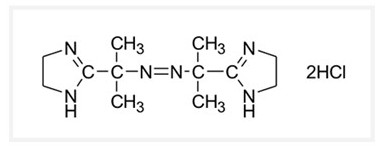
CAS NO. 27776-21-2
分子量 = 323.27
◆物理性质
|
外观 |
白色~淡黄色 |
|
融点 |
188~193℃(分解) |
|
10小时半减期温度 |
44℃(水中) |
|
活化性能量 |
108.2K J/mol K |
|
频率因子(ln A) |
30.19 |
|
溶解性 |
水:易溶 |
|
SADT |
140℃ |
|
毒性(LG50) |
3,200 mg/kg(经口大鼠[雄]) |
◆包装、保存条件
20kg (4×5kg) 纸箱
500g 纸盒
30℃以下保存
◆相关法规·安全性
|
剧毒法 |
不符合 |
|
消防法 |
不符合 |
|
化审法 |
5-5870、1-215 |
|
安卫法 |
已存在 |
|
TSCA |
Listed |
|
EINECS |
248-655-3 |
Whatman 滤膜 5201-330 201 33CM 100/PK
Whatman 滤膜 5201-330 201 33CM 100/PK 201 33CM 100/PK
Whatman 滤膜 29167246 MUP 0.45uM PTFE 100/PK – PROMO20
Whatman 滤膜 29167246 MUP 0.45uM PTFE 100/PK – PROMO20 MUP 0.45uM PTFE 100/PK – PROMO20
K677 AGAROSE I™-TBE BLEND 1.5\%琼脂糖 AMRESCO K677
名称:K677 AGAROSE I™-TBE BLEND 1.5\%琼脂糖
品牌:AMRESCO
订货号:K677
![]()
咨询此产品
产品介绍
K677 AGAROSE I™-TBE BLEND 1.5\%
Grade:BIOTECHNOLOGY GRADE
- Storage Condition:
- ROOM TEMPERATURE
Whatman 滤膜 10538882 SHARKSKIN 10INx750FT 1/PK
Whatman 滤膜 10538882 SHARKSKIN 10INx750FT 1/PK SHARKSKIN 10INx750FT 1/PK
水溶性荧光染料E53B0 Sulfo-Cyanine7 alkyne 50 mg
水溶性lumiprobe荧光染料E53B0 Sulfo-Cyanine7 alkyne 50 mg 水溶性lumiprobe荧光染料Sulfo-Cyanine7 炔基 50 mg 1270
Whatman 滤膜 10534408 GRADE 470 4INx250FT 1/PK
Whatman 滤膜 10534408 GRADE 470 4INx250FT 1/PK GRADE 470 4INx250FT 1/PK
Whatman 滤膜 11463410 PROFILL 25/0.2 RC
Whatman 滤膜 11463410 PROFILL 25/0.2 RC PROFILL 25/0.2 RC
BD培养基 211436 500 g EA BBL Motility Test Medium 瓶装运动性试验培养基
BD培养基 211436 500 g EA BBL Motility Test Medium 瓶装运动性试验培养基 
Amresco 0231-500ML DIMETHYL SULFOXIDE (DMSO) 二甲基亚砜 (DMSO)
Amresco 0231-500ML DIMETHYL SULFOXIDE (DMSO) 二甲基亚砜 (DMSO)
BD培养基 279220 2 kg EA Difco Columbia Blood Agar Base 哥伦比亚血琼脂基础
BD培养基 279220 2 kg EA Difco Columbia Blood Agar Base 哥伦比亚血琼脂基础 
Axygen试剂盒 AP-E96-P-4G AxyPrep Easy-96质粒DNA小量试剂盒
Axygen试剂盒 AP-E96-P-4G AxyPrep Easy-96质粒DNA小量试剂盒 4×96 prep 盒 1260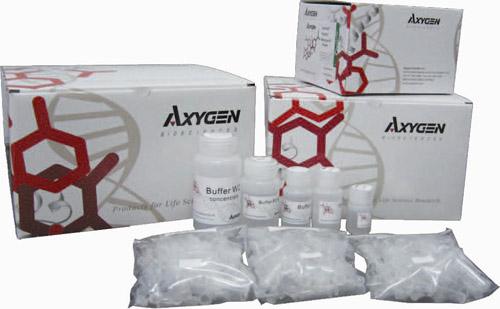
酒石酸检测试剂盒 Tartaric Acid Assay Kit 货号:K-TART Megazyme中文站
酒石酸检测试剂盒
英文名:Tartaric Acid Assay Kit
货号:K-TART
规格:200 assays (manual) / 2000 assays (microplate)
Colourimetric method for the determination of myo-Inositol
in various sample matrices
Principle:
(myo-inositol dehydrogenase)
(1) myo-Inositol + NAD+ →
2,4,6/3,5-pentahydroxycyclohexanone + NADH + H+
(diaphorase)
(2) INT + NADH + H+ → NAD+ + INT-formazan
Kit size: 50 assays
Method: Spectrophotometric at 492 nm
Reaction time: ~ 10 min
Detection limit: 0.8 mg/L
Application examples:
Animal feeds, food, baby milk formulation and other materials
Method recognition: Novel method
Q1. There is an issue with the performance of the kit; the results are not as expected.
If you suspect that the Megazyme test kit is not performing as expected such that expected results are not obtained please do the following:
- Ensure that you have tested the standard sample that is supplied with the Megazyme test kit.
- Send the results of the kit standard, blank samples and the results obtained for your sample, in the relevant MegaCalc spreadsheet (if available) to Megazyme (cs@megazyme.com). Where available the relevant MegaCalc spreadsheet can be downloaded from where the product appears on the Megazyme website.
- State the kit lot number being used (this is found on the outside of the kit box).
- State which assay format was used (refer to the relevant page in the kit booklet if necessary).
- State exact details of any modifications to the standard procedure that is provided by Megazyme.
- State the sample type and describe the sample preparation steps if applicable.
Q2. Should the pH of the sample be adjusted even for samples in acidic media?
The pH of the assay solution after the sample is added should be the same as that of the assay buffer that is supplied with the kit.
Low sample volumes (e.g. 0.1 mL) are not likely to affect the pH of the assay solution and therefore may not require pH adjustment.
Samples above 0.1 mL are more likely to affect the pH of the assay solution and therefore the pH of these samples should be adjusted as described in the data booklet, prior to addition to the assay.
Q3. Can you explain, step by step, how to follow the method and perform the kit assay?
For users who are not familiar with how to use the Megazyme tests kits then it is recommended that they follow this example, e.g. D-Fructose/D-Glucose Assay kit K-FRUGL (http://secure.megazyme.com/D-Fructose-D-Glucose-Assay-Kit):
1. The kit components are listed on pages 2-3 of the kit booklet.
2. Prepare the kit reagents as described on page 3.
3. For separate measurements of glucose and fructose follow procedure A on page 4.
4. Pipette the volumes listed for water, sample, solution 1 and solution 2 into 3 mL, 1 cm pathlength cuvettes. Duplicate sample assays and duplicate blanks are recommended. Mix the contents of each cuvette by inversion (seal the cuvette using parafilm or a plastic cuvette cap – do not use a finger) then after ~3 min record the first absorbance reading of each cuvette at 340 nm (this is reading A1).
5. Then add suspension 3 and mix the contents of each cuvette by inversion. Incubate for 5 minutes then record the absorbance reading of each cuvette at 340 nm (this is reading A2). NB. It is essential that the reaction is compete. To assess this, record the absorbances at ~ 2 minute intervals and until the absorbance plateaus. A stable absorbance indicates that the reaction is complete. If the absorbance continues to increase then continue to record absorbances until it plateaus and only then record absorbance reading A2.
6. Then add suspension 4 and mix the contents of each cuvette by inversion. Incubate for 5 minutes then take absorbance reading of each cuvette at 340 nm (this is reading A3). NB. As above, assess that the reaction has completed by take subsequent readings at ~2 min intervals.
7. For simple, automated results analysis, input the absorbance readings (A1, A2, A3) for samples and blanks into the K-FRUGL MegaCalc.
To ensure that the assay is working, and being performed correctly it is recommend that the test is performed using the standard sample that is provided with the kit and to obtain the expected values before proceeding to test real samples.
It is recommend that new users also watch this video which highlights how to perform the assays.
Many of the other Megazyme test kits follow a similar format.
Q4. The pH of my sample is low (pH ~ 3.0), do I need to adjust this before I use the sample in the kit assay?
The final pH of the kit assay after the sample is added should not change from what it should be (as stated in the kit for the assay buffer). If it does change then the sample will require pH adjustment. In most cases the sample volume being used is low relative to the final assay volume and in this case the pH of the kit assay is unlikely to be affected.
Q5. How can I work out how much sample to extract and what dilution of my sample should be used in the kit assay?
Where the amount of analyte in a liquid sample is unknown, it is recommended that a range of sample dilutions are prepared with the aim of obtaining an absorbance change in the assay that is within the linear range.
Where solid samples are analysed, the weight of sample per volume of water used for sample extraction/preparation can be altered to suit, as can the dilution of the extracted sample prior to the addition of the assay, as per liquid samples.
Q6. I have some doubts about the appearance/quality of a kit component what should be done?
If there are any concerns with any kit components, the first thing to do is to test the standard sample (control sample) that is supplied with the kit and ensure that the expected value (within the accepted variation) is obtained before testing any precious samples. This must be done using the procedure provided in the kit booklet without any modifications to the procedure. If there are still doubts about the results using the standard sample in the kit then send example results in the MegaCalc spread sheet to your product supplier (Megazyme or your local Megazyme distributor).
Q7. Can the sensitivity of the kit assay be increased?
For samples with low concentrations of analyte the sample volume used in the kit assay can be increased to increase sensitivity. When doing this the water volume is adjusted to retain the same final assay volume. This is critical for the manual assay format because the assay volume and sample volume are used in the calculation of results.
Q8. How much sample should be used for the clarification/extraction of my sample?
The volume/weight of sample and total volume of the extract can be modified to suit the sample. This will ultimately be dictated by the amount of analyte of interest in the sample and may require empirical determination. For low levels of analyte the sample:extract volume ratio can be increased (i.e. increase the sample and/or decrease the total extraction volume).
Alternatively, for samples with low concentrations of analyte, a larger sample volume can be added to the kit assay. When altering the sample volume adjust the distilled water volume added to the assay accordingly so that the total assay volume is not altered.
Q9. Can the test kit be used to measure biological fluids and what sample preparation method should be used?
The kit assay may work for biological fluids assuming that inositol is present above the limit of detection for the kit after any sample preparation (if required). Centrifugation of the samples and use of the supernatant directly in the kit assay (with appropriate dilution in distilled water) may be sufficient. However, if required a more stringent sample preparation method may be required and examples are provided at the following link:http://www.megazyme.com/docs/analytical-applications-downloads/biological_samples_111109.pdf?sfvrsn=2
The test kit has not been tested using biological fluids as samples because it is not marketed or registered as a medical device. This will therefore require your own validation.
Q10. Can the manual assay format be scaled down to a 96-well microplate format?
The majority of the Megazyme test kits are developed to work in cuvettes using the manual assay format, however the assay can be converted for use in a 96-well microplate format. To do this the assay volumes for the manual cuvette format are reduced by 10-fold. The calculation of results for the manual assay format uses a 1 cm path-length, however the path-length in the microplate is not 1 cm and therefore the MegaCalc spreadsheet or the calculation provided in the kit booklet for the manual format cannot be used for the micropalate format unless the microplate reader being used can.
There a 3 main methods for calculation of results using the microplate format:
- The easiest method is to use a microplate reader that has a path-length conversion capability (i.e. the microplater reader can detect the path-length of each well and convert the individual readings to a 1 cm path-length). This will allow values to be calculated using the MegaCalc calculation software which can be found where the product is located on the Megazyme website.
- Perform a standard curve of the analyte on each microplate that contains test samples and calculate the result of the test samples from the calibration curve (concentration of analyte versus absorbance).
- Perform a standard curve of the analyte in both the cuvette format (i.e. with a 1 cm path-length) and the 96-well microplate format and use these results to obtain a mean conversion factor between the cuvette values and the microplate values. Subsequent assays in the microplate format can then be converted from the calculated conversion factor.
Q11. When using this kit for quantitative analysis what level of accuracy and repeatability can be expected?
The test kit is extremely accurate – at Megazyme the quality control criteria for accuracy and repeatability is to be within 2% of the expected value using pure analytes.
However, the level of accuracy is obviously analyst and sample dependent.
Q12. Is it possible to add a larger volume then 2 μL of enzyme to the microplate assay? In some instances 2 μL can be difficult to pipette manually.
Yes, instead of adding 2 μL of enzyme suspension an alternative is to dilute the enzyme and add a larger volume to the microplate assay.
Dilute the assay buffer 10-fold with distilled water and use this as the diluent to dilute an aliquot of the enzyme suspension also by 10-fold. Instead of 2 μL, use 20 μL of the diluted enzyme in the microplate assay.
Q13. Must the minimum absorbance change for a sample always be at least 0.1?
No. The 0.1 change of absorbance is only a recommendation. The lowest acceptable change in absorbance can is dictated by the analyst and equipment (i.e. pipettes and spectrophotometer) and therefore can be can be determined by the user. With accurate pipetting, absorbance changes as low as 0.02 can be used accurately.
If a change in absorbance above 0.1 is required but cannot be achieved due to low concentrations of analyte in a sample, this can be overcome by using a larger sample volume in the assay to increase the absorbance change and thereby increase sensitivity of the assay. When doing this the increased volume of the sample should be subtracted from the distilled water volume that is added to the assay so that the total assay volume is unaltered. The increase sample volume should also be accounted for when calculating final results.
Q14. Can the sensitivity of the kit assay be increased?
Yes. Samples with the lower concentrations of analyte will generate a lower absorbance change. For samples with low concentrations of analyte, a larger sample volume can be used in the assay to increase the absorbance change and thereby increase sensitivity of the assay. When doing this the increased volume of the sample should be subtracted from the distilled water volume that is added to the assay so that the total assay volume is unaltered. The increase sample volume should also be accounted for when calculating final results.
Whatman 滤膜 8116-6966 CF6 2.25IN x 100M
Whatman 滤膜 8116-6966 CF6 2.25IN x 100M CF6 2.25IN x 100M
Whatman 滤膜 29168173 602 H 1/2 Folded Filters, 125 mm, 100/pk – PROMO
Whatman 滤膜 29168173 602 H 1/2 Folded Filters, 125 mm, 100/pk – PROMO 602 H 1/2 Folded Filters, 125 mm, 100/pk – PROMO

